Across North America, seed potato growers and certification specialists are hard at work year-round to help ensure a clean, safe supply of high-quality seed for the potato industry. From coast to coast—and beyond, in some cases—their work pays major dividends for the entire potato supply chain. Following are reports from several key certification programs on the 2021 seed potato crop.
California
Alexander B. Mkandawire
Seed Certification Representative
California Crop Improvement Association

True potato seed production field near Oceano on the Central Coast of California
California’s major production zones are the Central Valley and the San Joaquin Valley. The state generally received less than 50% of the total average rainfall in the 2020-21 crop season. The Central Valley relied heavily on aquifers as a source of water, although this source is being greatly depleted. The San Joaquin Valley production zone is in the delta region with a lot of water from the Sacramento River. About 40% of certified seed potato production was in the San Joaquin County.
Planting of certified fields started in Kern County near Bakersfield in the Central Valley on Dec. 17, 2020, with 60-degree temperatures, and ended in the San Joaquin Valley near Stockton on July 28 in 80-degree weather. Field inspections started on April 7 in Bakersfield and ended on Sept. 22 in Stockton, spanning a period of about six months.
California’s seed production is much smaller compared to other seed potato-producing states. In 2021 crop season, the certification program had a total of 680 acres, representing a decrease of 10% from the previous year. One seed grower explained the reason for the decrease as a reduced overseas demand for potatoes, possibly due to the COVID-19 pandemic. This year, one California grower produced “true” potato seed on the Central Coast. We are working with other certification programs on seed standards for this production system. The 2021 California potato certified seed directory may be obtained at ccia.ucdavis.edu/application-information/certified-potato-directory.
Apart from a proprietary variety, the varieties with the most certified acres grown were Granola, Sifra, Soprano, CalWhite, Red LaSoda, Alegria and Cristina, in that order. One of the major problems one of our largest growers had this year was in the transportation sector.
Shipping seed potatoes faced port authority ship and warehouse congestions for international shipments, as well as shortages and higher costs of refrigerated trucks for shipping within the country.
Colorado
Andrew Houser
Manager
Colorado Potato Certification Service
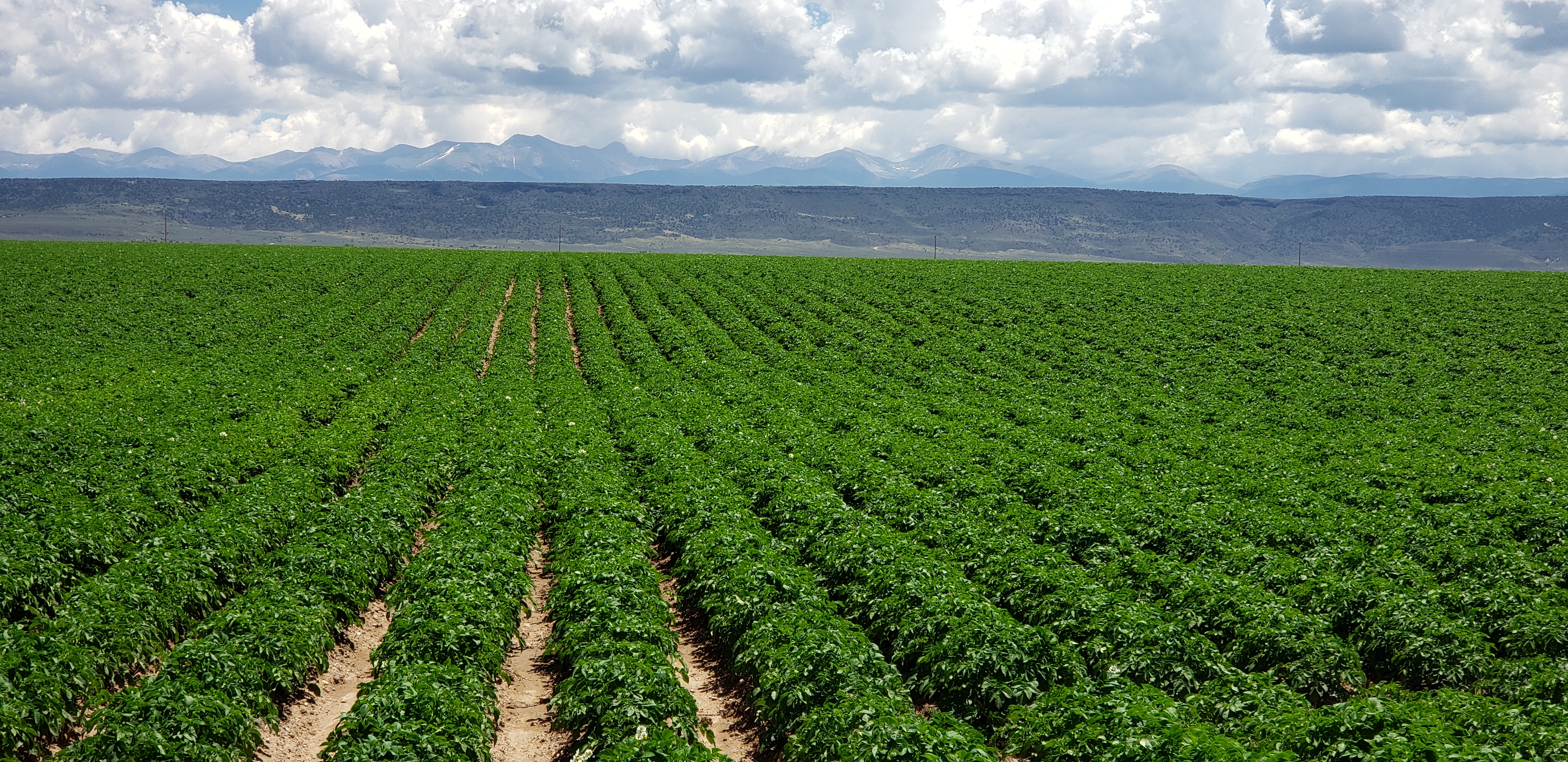
Field of certified seed potatoes at San Acacio Seed Farm in San Luis, Colorado
Planting of Colorado seed potatoes went well in the spring of 2021; however, many farms were hit with multiple hail events, affecting random fields at different times throughout the summer. Overall, day temperatures were warmer than average with cool night temperatures—ideal conditions for potato production. Hail set the crop back, depending on the damage severity and timing of the hail event. This made for difficult visual inspections in some cases.
Certified seed growers began killing vines in late July and continued through mid-August, limiting potential spread of virus by late-season aphid flights. Overall, crop yields have hovered around average to slightly below average, depending on variety grown and severity of hail damage during the summer months. Colorado’s post-harvest test is taking place on the North Shore of Oahu, Hawaii, this winter.
Colorado certified seed potato acreage for sale and grower plant-back was down from 8,504 acres in 2020 to 7,784 in 2021. The 2021 accepted certified acreage after summer field inspections was 7,631 acres. Rejections were caused by blackleg, PVY/mosaic and variety mix. Total potato acreage in the San Luis Valley was 48,265 acres, down from 50,923 acres in 2020.
The 2021 top five certified potato varieties in Colorado are:
- Russet Norkotah selections: 1,976 acres
- Canela Russet: 695 acres
- Reveille Russet: 617 acres
- Centennial Russet: 531 acres
- Soraya: 394 acres
An official 2021 certified seed directory is posted online at potatoes.colostate.edu. Additional information on Colorado’s certified seed can be found on the Colorado Certified Potato Growers’ Association website at www.coloradocertifiedpotatogrowers.com.
All seed lots imported into Colorado are required to undergo a post-harvest test, a lab test for PVYN, and a lab test for late blight to comply with the late blight quarantine for all seed coming into the San Luis Valley.
Idaho
Alan Westra
Southeast Area Manager
Idaho Crop Improvement Association, Inc.
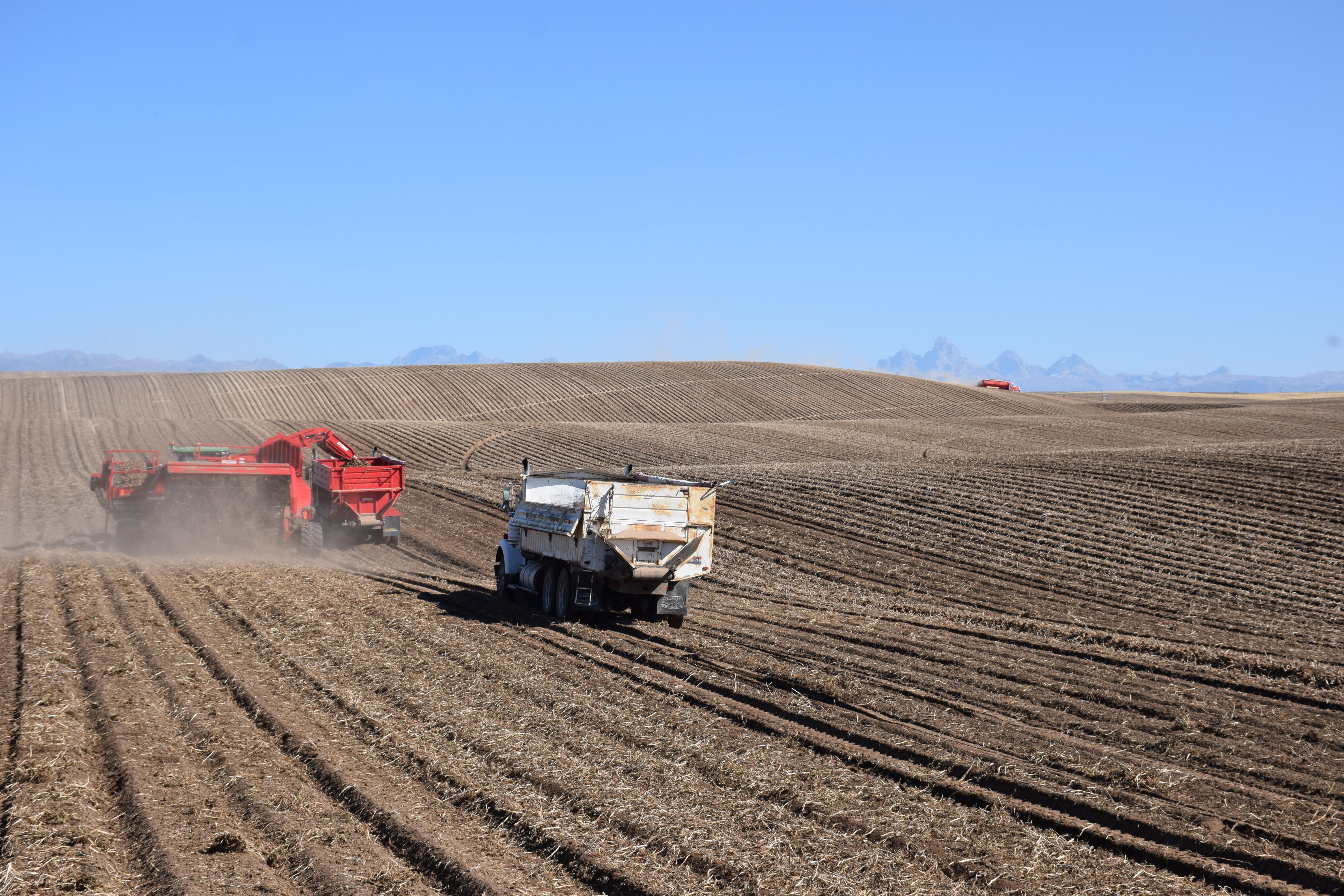
Seed potatoes are harvested at Skyline Farms near Newdale, Idaho
The 2021 season in Idaho began with normal weather and planting was completed without serious interruption. Abnormally hot and hazy conditions prevailed from June through mid-August, and exacerbated concerns about potential water shortages. Most growers did have sufficient water to complete their potato crops, in some cases at the expense of rotation crops. The latter half of August and all of September were more seasonable.
Harvest generally proceeded at normal pace. Yields are reported to be lower—significantly so in some cases—but seed quality going into storage has been reported as excellent. The 2021 crop appears to have a very nice size profile.
Seed health was also good this year. During summer inspections, the number of seed lots with visually detectable levels of PVY increased slightly over 2020, but remains below the 10-year average of 7.8 percent. Blackleg levels were normal and, once again, there were no detections of potato leaf roll or bacterial ring rot this year.
A complete listing of this year’s seed potato crop is available in the 2021 Idaho Certified Seed Potato Directory. This is posted on the Idaho Crop Improvement Association, Inc. website at www.idahocrop.com. At the conclusion of the second round of field inspections, a total of 30,940 acres were eligible for final certification this year. This is an increase of 2.9 percent from 2020 and, excluding proprietary genetics, includes a total of 133 varieties, selections and advanced clones. Ten varieties account for more than 80 percent of the total acres, with Russet Burbank, Russet Norkotah (all strains), Ranger Russet, Clearwater Russet, and Alturas continuing as the dominant varieties.
Maine
Eric Hitchcock
Seed Certification Program Manager
Maine Department of Agriculture, Conservation & Forestry

Growers fill former empty airplane hangars at Loring Air Force Base with surplus potatoes. Photos courtesy Hannah Catlin/ Aroostook Republican
The 2021 growing season was much less challenging in Maine than what growers experienced in 2020. Seed acreage was up almost 10 percent from last year, and rain events were more plentiful and much more normal than the prolonged dry periods that plagued Maine the past several years. This led to significantly higher yields for growers in most cases.
Overall, the 2021 crop appears to be healthy with low to moderate disease levels. As of Sept. 9, 2021, the certification program has 10,168 acres field certified from 90 farms.
The top five varieties by acreage field-certified in Maine for 2021 are:
- Caribou Russet (PVP): 1,259 acres
- Russet Burbank (MT strain): 914 acres
- Atlantic: 808 acres
- Snowden: 686 acres
- Lamoka (PVP): 654 acres
Inspectors are now performing PCN soil sampling and are in preparation for laboratory PVY post-harvest testing. All samples will be ELISA post-harvest tested at the certification laboratory in Presque Isle, Maine.
Montana
Nina Zidack
Director
Montana State University Seed Potato Certification Program
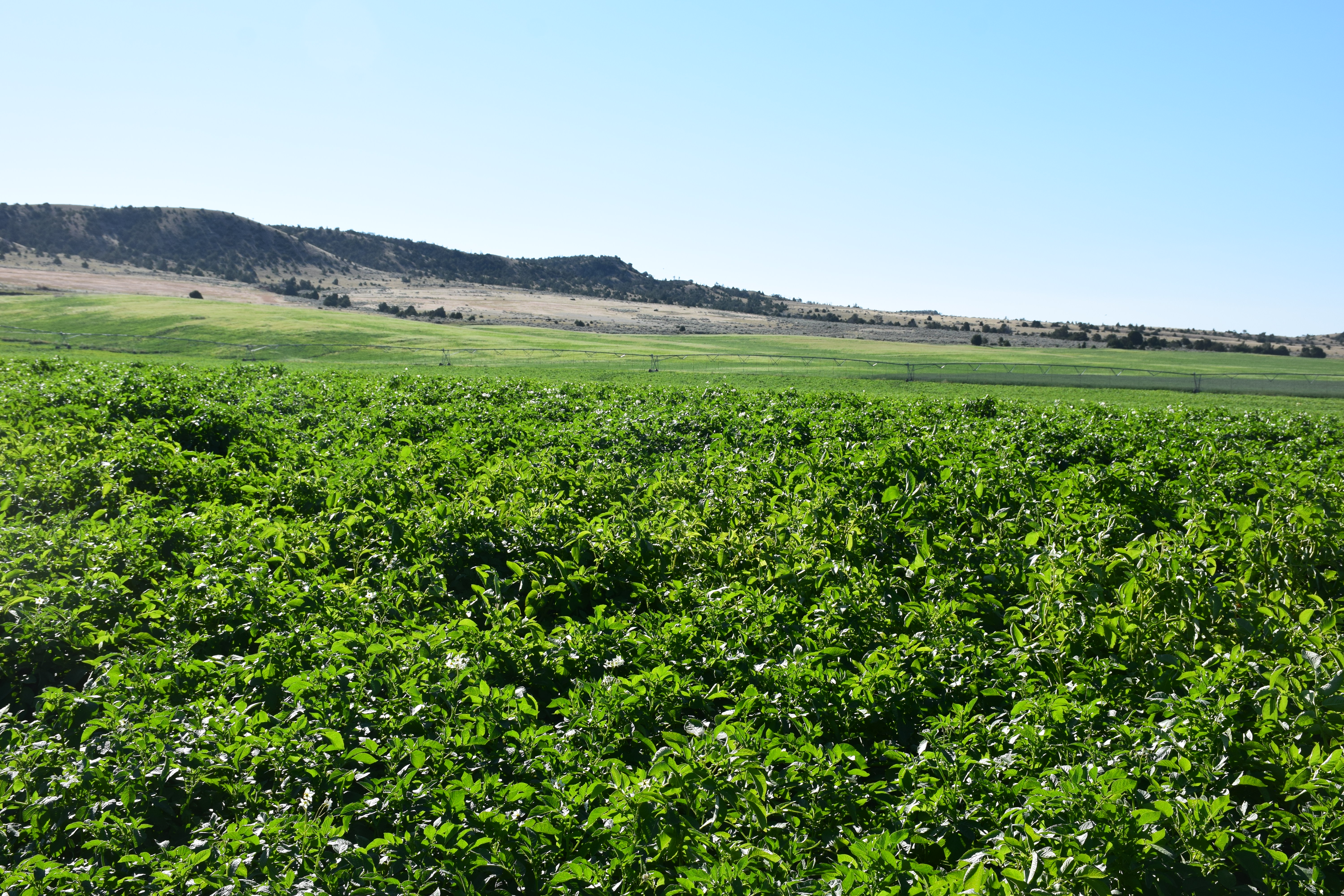
Certified seed potatoes growing at Foth Farms near Toston, Montana
The 2021 season marked the 100th certified seed potato crop in Montana. The 2021 Montana seed potato harvest was completed at a record pace by the second week of October with very good quality, average yields, and no frost damage. The growing season was very challenging throughout the West with high temperatures in June and July. Cooler August temperatures allowed for adequate bulking and better yields than originally expected. Disease pressure from PVY and all foliar pathogens was very low during the growing season.
Throughout the state, 10,930 acres representing 84 varieties were grown in 2021. Russet Burbank is the most widely grown variety at 3,713 acres, and has held steady over the past five years. Umatilla Russet has the second-highest acreage at 1,410, representing a decrease of 21% since 2017. The strongest mover in Montana’s portfolio is Clearwater Russet, which is a close third to Umatilla, and has increased 99% from 697 acres in 2017. Ranger Russet was edged out by Clearwater to become the fourth-place variety, and has been relatively steady over the past five years, with a 2021 total of 1,204 acres. The fifth-most widely grown variety is Alturas at 693 acres.
Russet Norkotah TX(278) is the most widely grown Norkotah selection at 581 acres and has held very steady over the past five years. Russet Norkotah TX(296) has increased substantially from 76 acres in 2017 to 276 acres in 2021. Russet Norkotah CO(3) is holding steady at 252 acres, and Russet Norkotah TX(112) is increasing very rapidly from a mere seven acres in 2017 to 195 acres in 2021. The other variety on the rise is Ivory Russet, which has expanded from 17 to 252 acres in five years.
Dark Red Norland is the highest-acreage red variety at 94 acres. Snowden and Lamoka at 80 and 46 acres, respectively, are the main chip varieties grown in Montana.
Montana is performing its post-harvest test on Oahu, Hawaii, with planting in November and visual inspections and leaf testing late December through mid-January. In addition to the field inspections and leaf testing, Montana growers submit duplicate samples of Generation 1 and Generation 2 seed lots for direct tuber testing using PCR. This delivers early information to the growers on suitability of lots for recertification, as well as a backup to the field sample in the event of complications in the field.
North Dakota
Kent Sather
Director of Potato Programs
North Dakota State Seed Department
Production of the 2021 crop of North Dakota certified seed was produced under a record drought year. It was planted into moisture-deficit soil and received well-below-average rainfall in the form of scattered localized showers. Good moisture fell late in the season, helping harvest conditions but not increasing yield.
Twenty-six North Dakota certified seed growers entered acreage in 2021. From those 26 producers, 14,103 acres of seed passed summer inspections and testing—103 fewer acres than 2020.
The top five varieties were:
- Norland strains: 2,544 acres
- Umatilla Russet: 2,143 acres
- Bannock Russet: 1,266 acres
- Dakota Pearl: 1,117 acres
- Ranger Russet: 1,081 acres
Seed lot leaf samples as required or requested, and were tested for PVY and PVX. Results matched field inspection notes. Mosaic levels observed were zero or very low. Inspectors continued to look for Dickeya dianthicola symptoms. Suspect plants were lab-tested; no positives have been confirmed. Additional tuber screening for Dickeya will be done at the request of individual growers.
Phytophthora infestans was a minimal threat this year. Even so, growers were encouraged to use proactive fungicide applications. No late blight was found during inspections in certified seed lots. Growers were also attentive to aphid counts, and were encouraged to use protective oils and insecticides, and to vine kill as early as possible.
Early-generation seed lots planted in isolation were free from viruses. These seed lots provide the basis for future North Dakota seed production. North Dakota State Seed Department seed stock staff harvested an excellent mini-tuber crop in June and October, providing a clean seed source for future crops of certified seed.
The 2021 North Dakota Seed Directories can be obtained by calling the North Dakota State Seed Department at (701) 231-5000 or online at www.nd.gov/seed.
Oregon
Jeff McMorran
Certification Specialist
Oregon Seed Certification Service
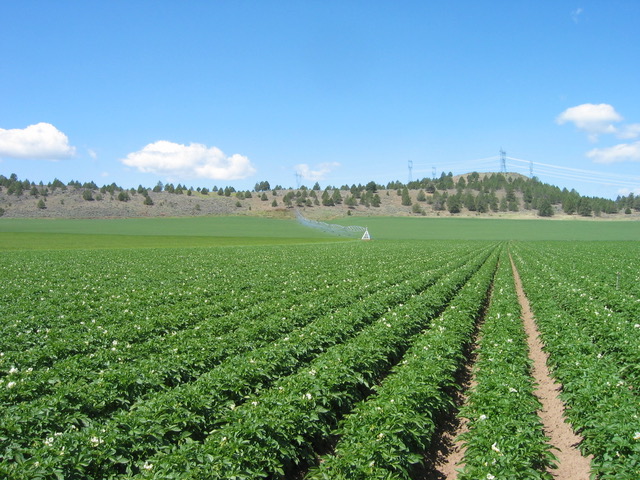
Oregon certified seed potatoes
The 2021 season tried the stamina of Oregon Seed Certification Service (OSCS) inspectors as well as growers. Though planting and early growing conditions were near ideal this year, the season was unusually hot (with temperatures often exceeding 100 degrees Fahrenheit) through most of rest of the growing season, compounded by very dry conditions statewide. Wildfires in the Cascades and Blue Mountains also resulted in smoky skies over many of the seed-growing areas. On the flipside, fall weather was very pleasant and ideal for a successful harvest for the most part.
Oregon certified 3,052 acres of potato seed in 2021 (pending harvest inspections and post-harvest test), a 6% increase over 2020. As of harvest time, 63 acres were withdrawn due to lack of irrigation water, and another 15 withdrawn after first inspection due to excessive mosaic in the seed source. Other scored diseases were relatively low; however, variety mix resulted in several downgrades, and chemical injury was of a concern in several lots. Yields seem to be about normal or slightly depressed, depending on variety and area.
Clearwater Russet was the No. 1 variety produced in Oregon in 2021, at 338.6 acres. Lamoka, Frito-Lay varieties, Ciklamen and Gala were also at the top of the listings. A complete listing of the varieties and acres produced in Oregon, as well as more details on the field readings, can be found at seedcert.oregonstate.edu/potatoes under “Seed Report and Directory of Growers” and “Oregon Certified Seed Potato Field Readings and Statistics.”
OSCS employs five full-time and four part-time inspectors involved in the potato program. This year, two new full-time inspectors, Craig Agidus and Mason McKinney, were hired. This will help OSCS with potato inspection either in the field and/or the winter grow-out greenhouses. These two will also have responsibilities in OSCS’s many other crops. Tami Brown, who has been with OSCS for about five years, will take over the potato program when Jeff McMorran retires next year.
Washington
Benita Matheson
Plant Services Supervisor
Washington State Department of Agriculture
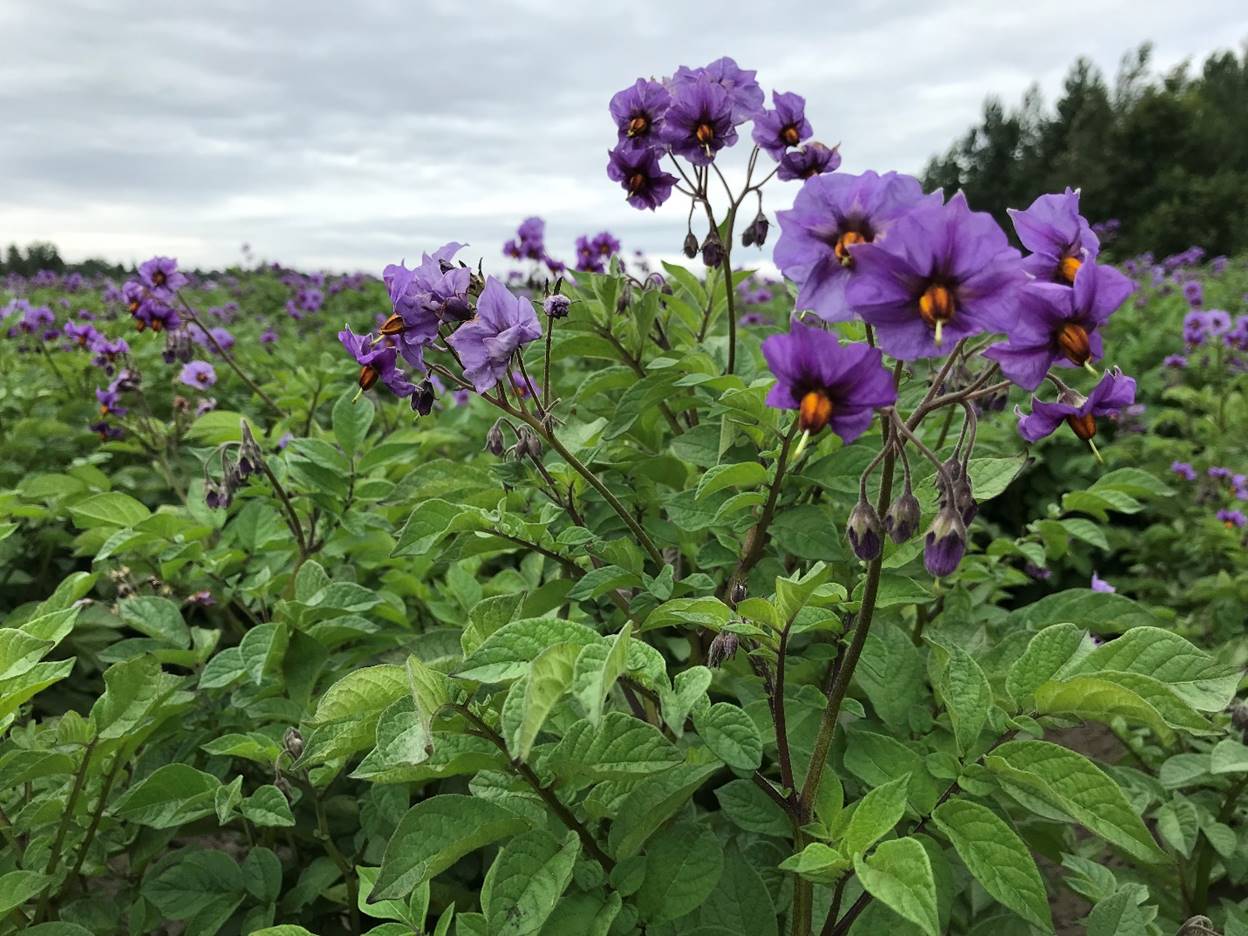
Certified seed potatoes grown in Whatcom County, Washington. Photo by Kay Oakley
A total of 3,648 acres of seed potatoes were entered for certification during the 2021 growing season in Washington State. This is a 121-acre increase from last year.
The top four varieties grown were:
- Ciklamen: 582 acres
- 907-15: 317 acres
- Chieftain: 285 acres
- Russet Burbank: 234 acres
The total acres planted include 146 different varieties ranging in size from partial-acre plots to 68-acre fields. Most seed lots are less than 20 acres in size and include numbered clones, table stock, processing and heirloom varieties. Nine separate farms submitted 478 individual seed lots for certification in 2021.
This year, Washington’s climate was hot and dry. Drought conditions were noted throughout the state, and Northwest growers saw the need for more irrigation instead of relying on natural rainfall. Washington State Department of Agriculture (WSDA) staff noted that late blight and blackleg disease pressure was slight to nonexistent.
Harvest began two weeks earlier than normal, at the beginning of September, and was completed in late October. Yields are noted to be fair and average, even with prolonged heat conditions. WSDA noted few external damage to the tubers, such as knob growth, which can be graded out at time of harvest and shipping. Seed shipments to southern climates began in late fall and have continued into the winter months, with the majority of seed to be shipped in early spring.
Washington State certified seed growers have submitted seed lot samples for the post-harvest test, which will be conducted in Hawaii.
Wisconsin
Alex Crockford
Seed Potato Program Manager
University Wisconsin-Madison

Red potatoes grown at Gumz Farms in Endeavor, Wisconsin
Wisconsin’s seed potato production is up 2% in 2021, with a total of 9,499.56 acres passing summer inspections.
Varieties remain strongly oriented toward chips, with Atlantic, Lamoka, and proprietary varieties leading the list of top varieties. Manistee and Mackinaw are of increasing interest in the chip market. Silverton Russet remains a strong fresh market russet; however, several upcoming russet varieties, including Reveille, Caribou, Plover, and Lakeview, are becoming more established.
Planting operations this season began early for some seed operations and progressed relatively quickly through the moderate spring weather, conditions turned hot late in planting and near emergence. The climate in Wisconsin moderated following late spring heat, allowing for a good growing season without extremes in temperature. Early-season blackleg was low despite the heat.
Rainfall was regular throughout the growing season, with only average irrigation amounts needed to meet crop needs. Vine-killing began earlier this growing season, with early bulking on some varieties.
Harvest conditions, despite some hot and humid days, were optimal, allowing much of the seed area an excellent period of digging days. Yields for many growers were reportedly up, with some storages at or beyond capacity.
The Wisconsin post-harvest test will continue to occur in southern Florida.
Manitoba
Russell Jonk
President
Seed Potato Growers Association of Manitoba
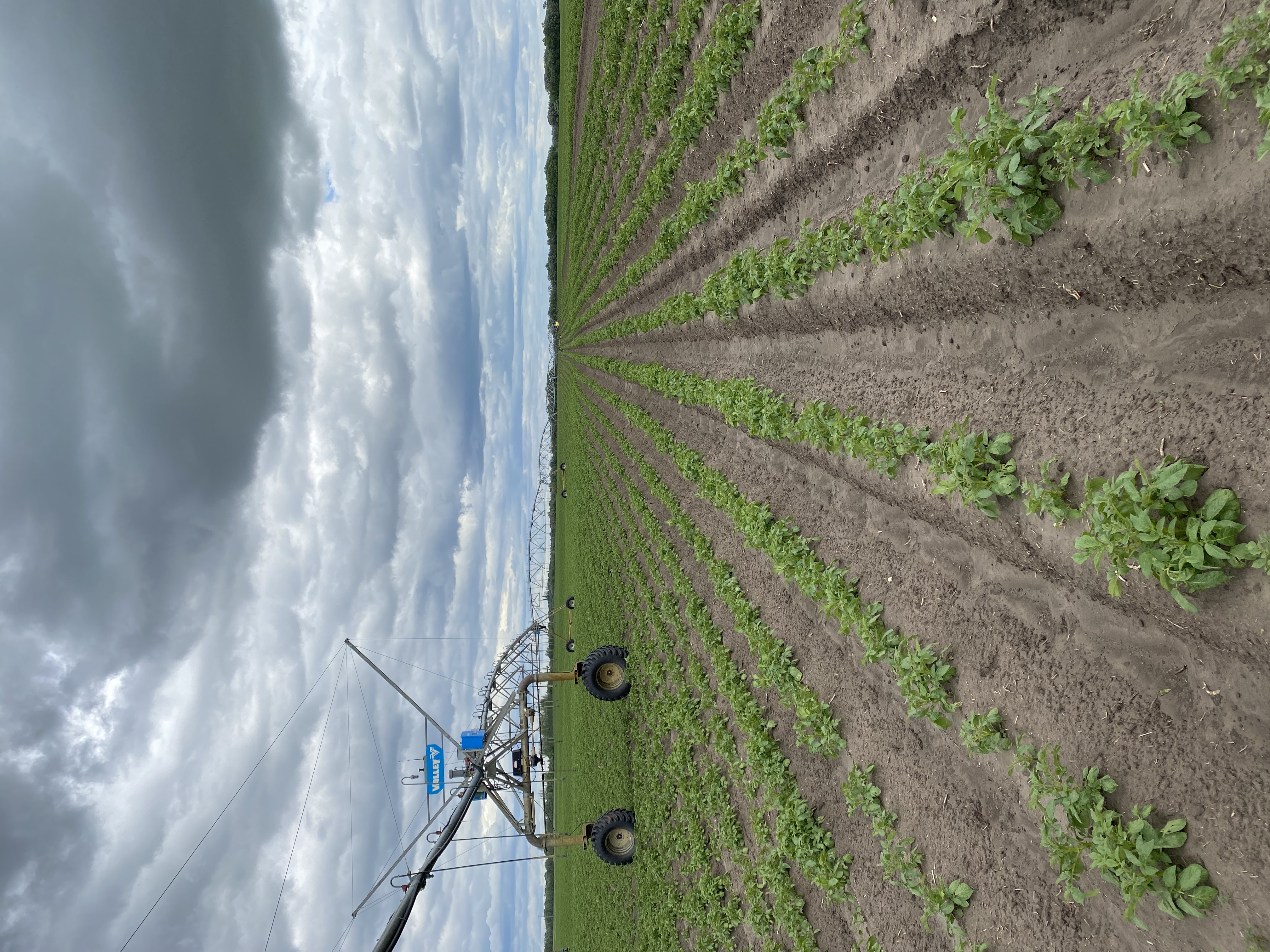
Seed potatoes growing at Swansfleet Alliance near Holland, Manitoba. Photo courtesy Russell Jonk
The 2021 growing season was a challenging one for potatoes in Manitoba, just as it was for most of western North America. Drought and above-normal temperatures made irrigation critical for crop quality and yield. Some areas of the province have better access to water than others, so yields were quite variable from farm to farm. Seed acres this year were relatively similar to 2020 at around 6,000 acres.
Table seed volumes are down roughly 30 to 40%, but quality remains good aside from some misshapen tubers and early sprouting due to stress on certain varieties. The majority of the process seed crop is irrigated; quality and yields were surprisingly good given the heat this season. Russet Burbank was once again the dominant seed variety grown by acre and volume.
Manitoban growers implement a program of mineral oil applications and, when necessary, insecticide. The province has a weekly aphid monitoring program, and growers , pay close attention to the North Dakota and Minnesota monitoring programs, as aphids do not overwinter in Manitoba, moving in from the south through the growing season. Overall low numbers of aphids that can efficiently vector virus combined with the preventative program in Manitoba for the 2021 season should equate to low virus infection in the seed crop.
Foliar disease pressure was very low, and the seed crop is storing well for most growers. A very warm, dry fall similar to 2020 made for excellent harvest conditions wherever water could be applied to manage clods. Frost damage was not an issue, and late blight was again not detected in Manitoba in commercial or seed fields.
For a complete listing of varieties and generations available, please refer to the Manitoba Seed Potato Directory at www.manitobaseedpotatoes.com.